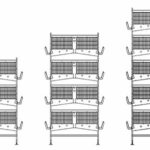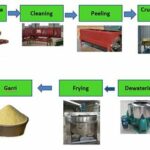Investigations have revealed that between 2003 and 2013, Nigeria may have imported rice to the tune of 17,206,077 tonnes with an average import at 1,564,188 million, NaijaAgroNet can authoritatively report.
According to the Statistics Division of Food and Agriculture Organisation (FAO), an intergovernmental organization of the United Nations with over 194 member nations, the division’s mission, NaijaAgroNet gathered is to improve data collection and dissemination for development and the fight against global hunger and malnutrition.
These imports of 17,206,077 tonnes, NaijaAgroNet reports, came in the heels of against the total production of 114.3 million tonnes within the period under review including both calculated and official data as at the time of filing this report.
For the rice import in 2003, Nigeria recorded 1600701 tonnes, 1396692 in 2004, 1174071 in 2005, 974647 in 2006, 1215758 in 2007, 970787 in 2008, 1160671 in 2009 and 1882759 in 2010, while 2187419 was recorded in 2011 followed by 2455202 a year later, just as 2187370 was the tonnes of rice imported in 2013.
In addition, NaijaAgroNet gathered that bulk of the data were unearthed from aggregation and includes the official, semi-official, estimated and or calculated data from the Nigerian government by FAO.
The imported tonnes of rice, NaijaAgroNet investigations revealed may have been “rice in milled equivalent.“
Market watchers believed that despite the decline recorded by IRERP that obviously what was gathered as official data, semi-official or even aggregated were crossly in adequate considering the number of smuggled tonnes and the nation’s craze for foreign products which is not alien to agriculture produce.
This is despite the fact that most foreign rice imported into Nigeria takes averagely three to five months to be shipped into the country, therefore fortified thus missing relevant vitamins.
This much was what kept the cost of ‘foreign rice’ as its fondly called locally high, even as there is allegations of such chemical used in preserving the rice to have become instrumental to certain kind of cancer.
Noteworthy is that the initiative on Increased Rice Production and Export Programme (IRPEP) report, released in 2013 by the Central Bank of Nigeria (CBN) showed that it recorded some accomplishments.
These comprised of the discovery that both national and international research institutes working in Nigeria have developed over 52 rice varieties with potential yields of 28 tonnes of paddy per hectare and maturity periods ranging from 95 to 140 days.
IRPEP records also showed increase in the areas cultivated from 2.2 million hectare (ha) in 1999 to 2.8 million ha in 2006 and 3.2 million ha in 2007; while an increase was recorded in annual production from 3.3 million tonnes of milled rice in 2000 to 4.2 million tonnes in 2006, and 4.8 million tonnes in 2007. Although these represented significant increases in output, IRPEP equally highlighted that the targets of 6 million tonnes in 2005 and 9.8 million tonnes in 2007 were not achieved.
NaijaAgroNet further quoted IRPEP as stating that increase in productivity per hectare as a result of the introduction of high-yielding NERICA rice variety and R-Box technology among others brought about the reduction in rice importation from 2.0 million tonnes in 2003 to less than 1.0 million tonnes in 2006 and 2007, thus, conserving foreign exchange.
Remmy Nweke/ED, Ops
… Linking agrobiz, sustainable environs, people & technology
Pic: A graphic table of Nigeria’s rice import between 2003 and 2013














